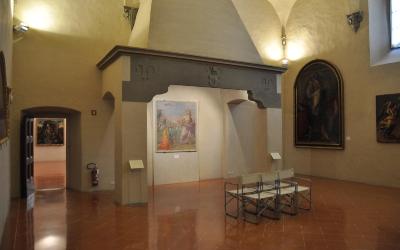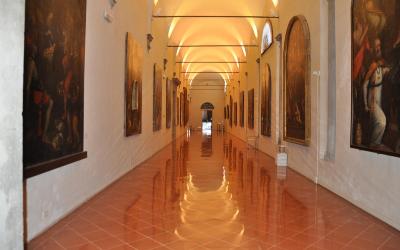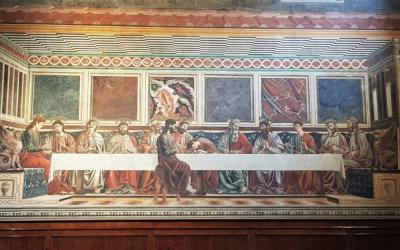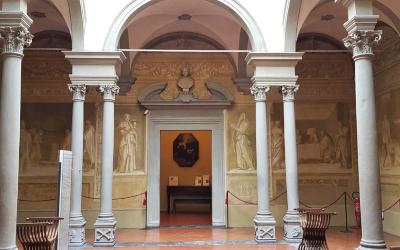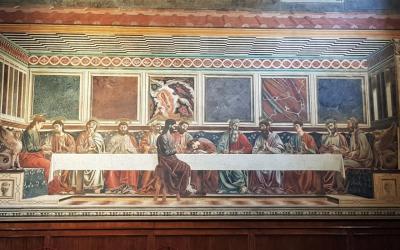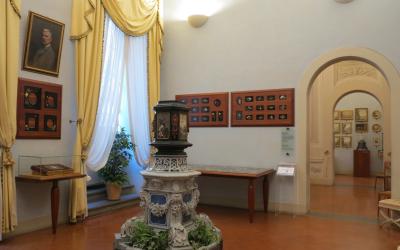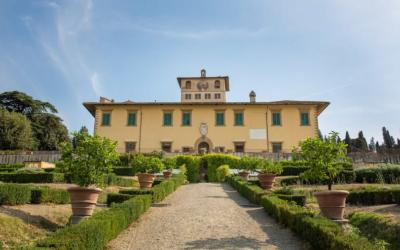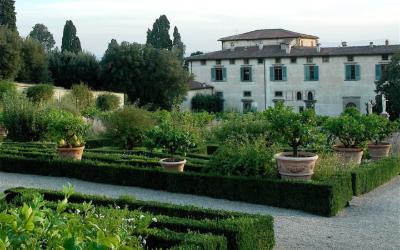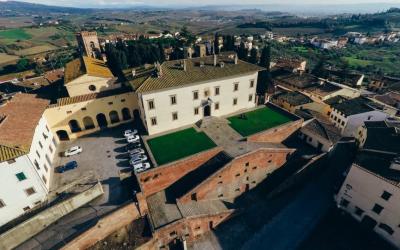The Museum of Andrea del Sarto’s Cenacolo is located in the rooms of the ancient Benedictine-Vallombrosan monastery dedicated to San Salvi.
The Abbey, founded in the 11th century, was enlarged and restored starting at the beginning of the 16th century under the direction of Biagio Milanesi and later Abbot Ilario Panichi.
-
Opening days
from Tuesday to Sunday
-
Opening times
8.30am – 2.00pm (last admission 1.20pm)
-
Closing
Monday, January 1st, December 25th
-
Extra Opening times
Saturdays, November 1, 15, 22, 29, and December 6, 2025:
2:30 PM - 6:20 PM (last admission 6:00 PM) - Web Cenacolo of Andrea del Sarto at San Salvi
-
Feature List
- Info line
- Wheelchair accessible
BRIEF HISTORICAL NOTES
The grand project of expansion involved the construction of the southern portico of the loggia, the kitchen, the lavabo hall, and the refectory, where in 1511 Andrea del Sarto was commissioned to paint the fresco of the Last Supper, later completed in 1526.
Andrea del Sarto, inspired by Leonardo da Vinci’s famous Last Supper in Milan, captures the apostles at the moment they hear the announcement of betrayal from Jesus, and adds in the upper section a small, original scene of two figures leaning from a terrace as witnesses to the event.
The preparatory drawings for the figures reveal the long preliminary study behind this grand and vibrant fresco, immediately communicative and rich in precious nuances rendered with exceptional mastery in the quick fresco technique.
According to the account by Benedetto Varchi, written twenty years later, the beauty of the fresco saved that part of the convent from the destruction ordered by the Florentine Republic, which wanted to prevent buildings outside the city walls from offering shelter to the army of Charles V during the siege of Florence in 1529.
In 1511 the decoration of the underside of the vault’s arch also dates, with grotesques executed by Andrea di Cosimo Feltrini and, probably, Franciabigio. Depicted here are Saint John Gualberto, Saint Salvi, the Trinity (in the center), Saint Bernardino degli Uberti, and Saint Benedict.
VISIT ITINERARY IN BRIEF
The visit to the museum winds through the splendid spaces of the convent: the cloister of Sant’Antonino, the Hospice Hall, the Refectory Hall, the Chapter Hall, and the monks’ cells. The museum spaces coexist with the adjoining church of San Marco and the areas around the cloister of San Domenico, still reserved for monastic life. Among the principal works by Fra Angelico are the Annunciation, a masterpiece of Renaissance painting, the Deposition, the Triptych of Saint Peter Martyr, the Annalena Altarpiece, the Last Judgment, the San Marco Altarpiece, and the Tabernacle of the Linen Guild.
NOT TO BE MISSED
Along the museum route set up in the convent spaces (corridor, kitchen, lavabo hall, refectory) are exhibited 16th-century paintings that excellently illustrate Florentine painting of the period. Among them are works by Pontormo (notably Faith and Charity, opposite the refectory entrance), Franciabigio, Raffaellino del Garbo, Bachiacca, Carlo Portelli, Bernardino Poccetti, and a group of paintings by Plautilla Nelli (1524–1588), one of the rare female artists mentioned by Giorgio Vasari in the Lives.
In one hall are displayed the refined marbles by Benedetto Rovezzano (1505) for the Funerary Monument to Saint John Gualberto, founder of the Vallombrosans, a complex that remained unfinished.
Where
via di San Salvi, 16 - 50135 Firenze (FI)

